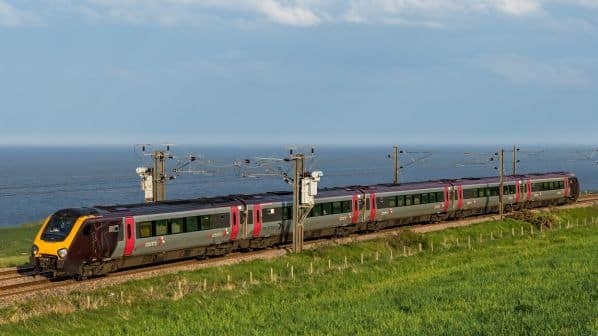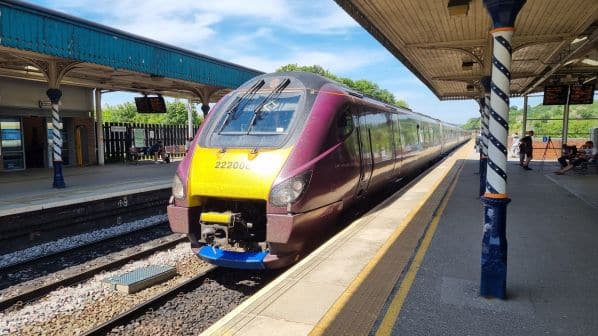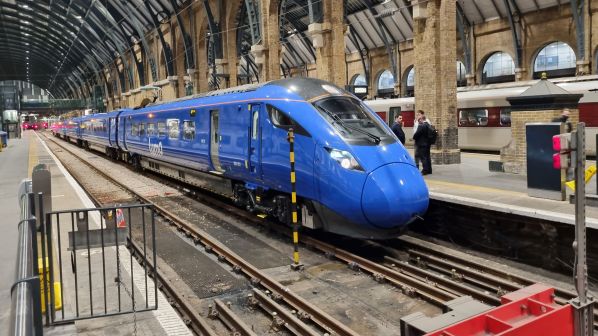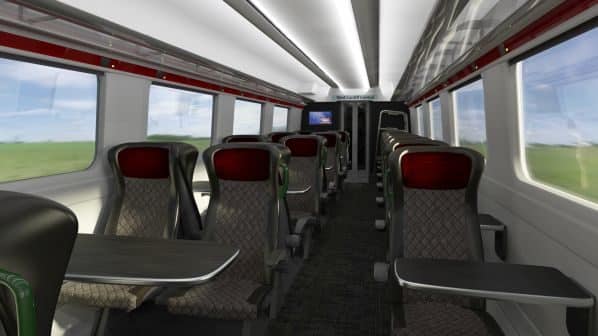ALSTOM announced on March 14 that it will seek to operate passenger services in Britain for the first time, forming Wrexham, Shropshire and Midlands Railway (WSMR) in joint venture with consultancy SLC Rail.
Alstom is the majority shareholder and is making a financial contribution that reflects this, according to Mr Matthew Byrne, president of the Services product line at Alstom.
WSMR aims to launch in 2025 direct open-access services from London Euston to Shrewsbury and Wrexham in North Wales. Outside London, it will serve a core catchment area of 1.5 million people, a figure that is expected to grow by 16% over the next 10 years.
WSMR submitted an application to operate the new services to Britain’s rail regulator, the Office of Rail and Road (ORR), on March 14.
WSMR plans to operate five trains per day in each direction from Monday to Saturday, and four each way on Sunday, with intermediate stops at Gobowen, Shrewsbury, Telford Central, Wolverhampton, Walsall, Coleshill Parkway, Nuneaton and Milton Keynes Central.
Trains will also call at a new station at Darlaston, between Wolverhampton and Walsall, which is expected to open in late 2025.
Between Walsall and Coleshill, WSMR services will use the currently freight-only Sutton Park Line. This will enable trains to avoid central Birmingham, “one of the most complex and congested parts of the British rail network,” according to Byrne, and will provide direct services from Wolverhampton and Walsall to Nuneaton, offering new travel options.
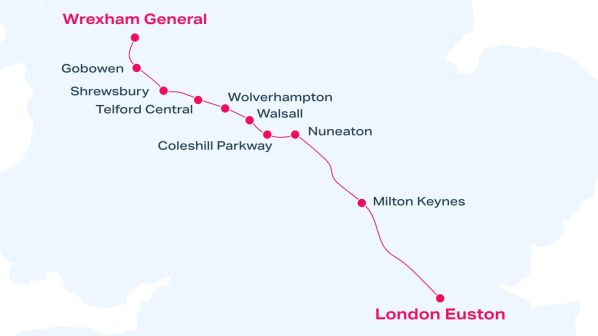
Alstom now has over 50 live rail operations and system maintenance contracts around the world. Active in the commuter, metro and light rail markets, it says it is the largest private passenger operator in North America, and is also present in mainland Europe, North Africa, the Middle East and the Asia-Pacific region.
“WSMR is the right opportunity for Alstom to enter the operating market in Britain,” Byrne told IRJ. Among other factors, he cites strong political support for introducing more competition in the form of purely commercial open-access services.
He also points to high levels of unsatisfied demand, as many passengers from Wrexham, Shrewsbury and other stations to be served by WSMR must currently change trains to reach London. Byrne says the extended journey times are especially unattractive for business travellers.
This is not the first time that direct services from Wrexham and Shrewsbury to London have attracted the interest of open-access operators. The previous attempt came to an end on January 28 2011 when Wrexham & Shropshire, which was owned by DB Regio, ceased all operations after failing to attract sufficient business.
Ability to succeed
“The ability for open-access operators to succeed has changed,” Byrne says. He believes that WSMR’s proposed route will be more attractive to business travellers than the longer and slower journey to London Marylebone on Wrexham & Shropshire.
“We believe that we will be able to attract a different market, given our route into London Euston,” he says. And Byrne is confident that the train paths necessary can be found at times to suit market demand on the southern end of the West Coast Main Line (WCML), one of the busiest sections of Britain’s national network.
“We are confident that the paths exist,” Byrne says, citing work to identify the best paths during the development of the WSMR business case.

One of ORR’s main tasks will be to assess if the proposed services pass its Not Primarily Abstractive (NPA) test. This determines if the new revenue that they generate is sufficient to compensate for any revenue lost by existing operators that are financially supported by the government.
ORR policy is to challenge and potentially reject applications that generate less than £0.30 of new revenue for each £1 of net revenue loss to taxpayers. “Our proposal has a very high chance of success,” Byrne says. “We are very confident.”
Details of the WSMR fleet, branding and service provision will be announced at a later date. On the potential for bi-mode trains, Byrne says that Alstom is “very cognisant of the environmental footprint,” given that the Wolverhampton - Walsall and Nuneaton - London sections of the proposed route are electrified.
The WSMR fleet will be maintained at an existing Alstom facility, he says. This could be the Central Rivers depot near Burton-on-Trent, which maintains the class 220 Voyager and class 221 Super Voyager diesel trains supplied to CrossCountry by Bombardier.
“From the Welsh borders to the Midlands, our routes will forge new connections, linking overlooked regions of England and Wales with direct services to and from London,” says SLC Rail managing director, Mr Ian Walters.
“Passengers will benefit from more competitive fares and new technology to simplify ticket purchasing,” Walters says. “We want WSMR passengers to experience a new excellence in customer service onboard our inter-city trains.”
“These exciting proposals could see better connections for communities across North Wales and the Midlands, including direct services to London from Shrewsbury, Telford and Wrexham,” says rail minister, Mr Huw Merriman.
“Competition delivers choice for passengers and drives up standards, which is why we continue to work with industry to help make the most of open-access rail.”
